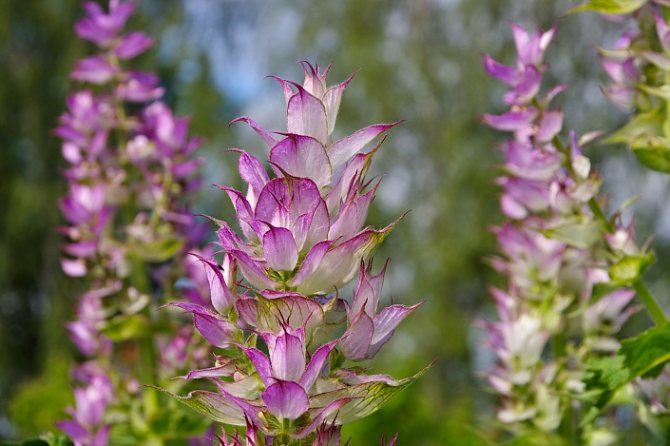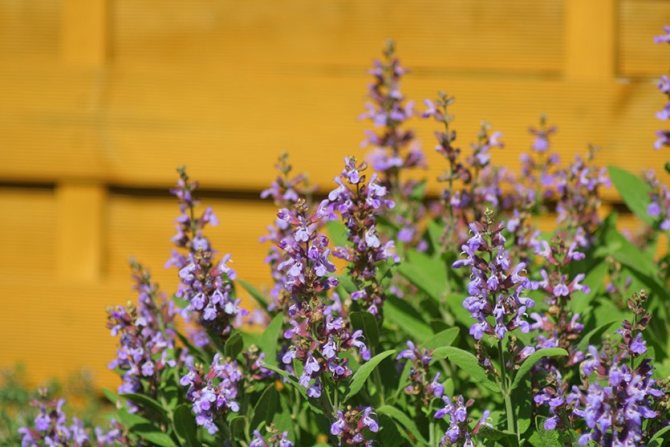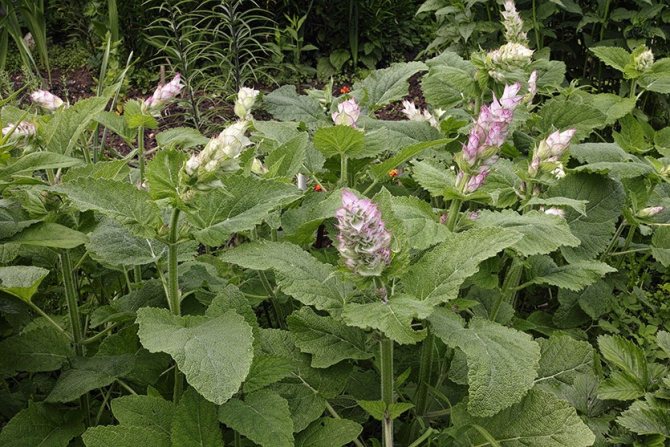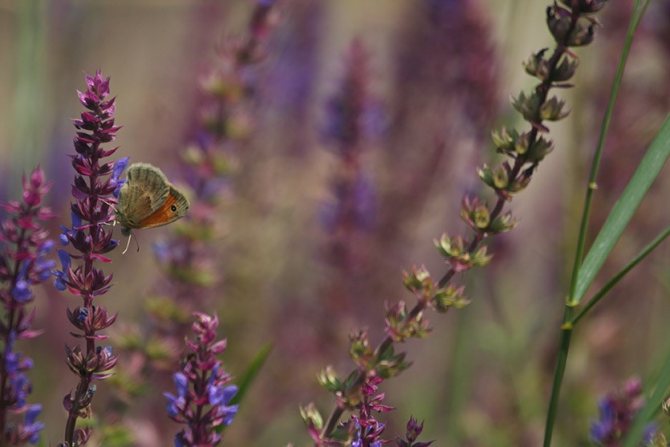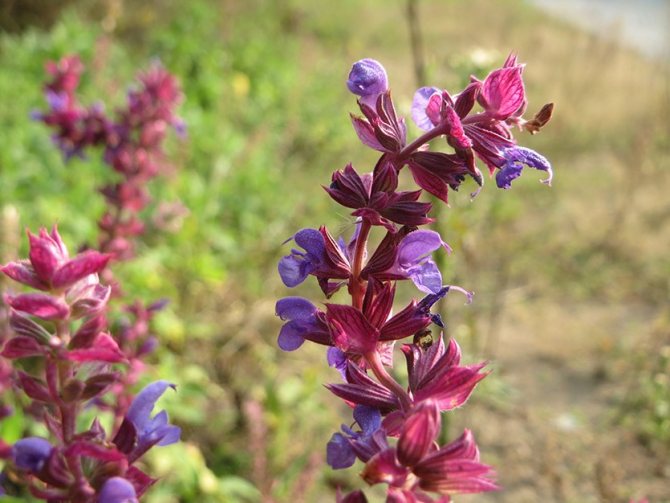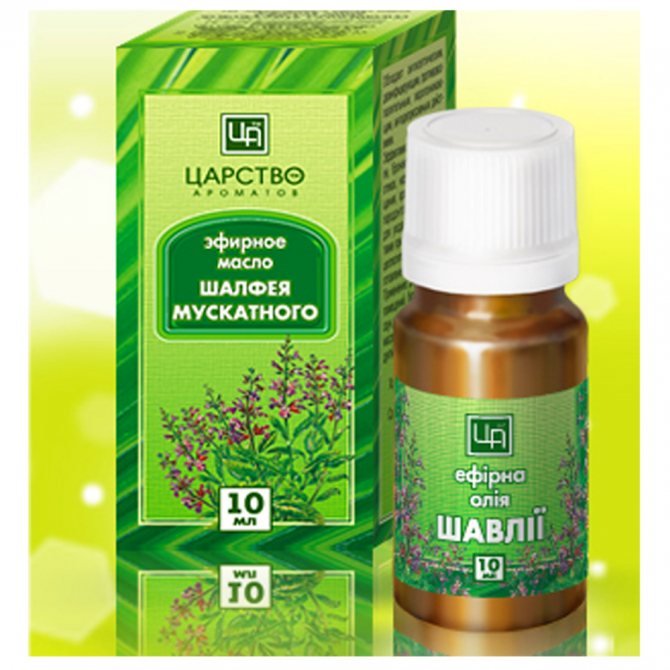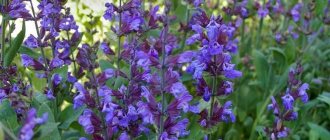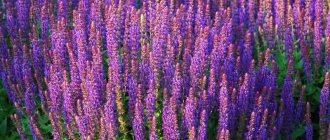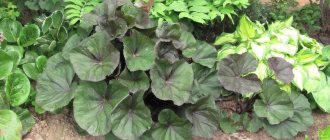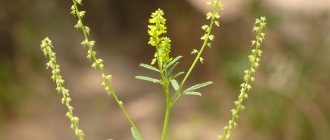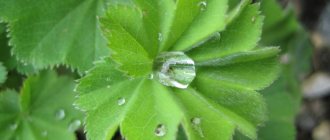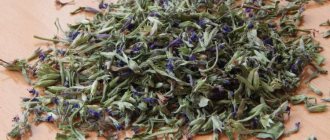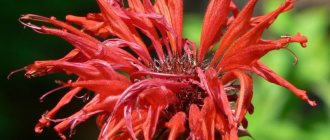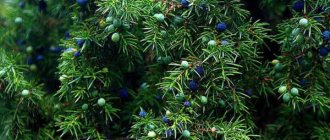Sage is the name of a whole group of herbaceous plants belonging to the Lamiaceae family. A characteristic feature is a large number of varieties that are actively used in folk and traditional medicine, cosmetology and cooking. The first mentions of it were recorded in antiquity. The doctors of that time were convinced that with the help of sage any ailment could be overcome. In addition, thousands of years ago, sage was equated with the philosopher's stone, since people believed that it improved material well-being. Today, many consider this to be an absurdity, but the medicinal properties of the herb are beyond doubt.
Sage varieties and types
Absolutely all perennial sage varieties are popular among landscape designers. After all, the plant is absolutely not whimsical, but with its help, it turns out to create unconventional garden compositions. For successful cultivation, it is still necessary to reckon with the existing features of the cultivation of sage plants in the open field.
What does sage look like photo varieties and names:
Sage species
Here is a short list of some of the most common types of sage:
- salvia officinalis
- clary sage
- narcotic
- oak sage
- meadow sage
- adhesive
The subspecies medicinal or medicinal sage (S.officinalis) - there are plants with a height of 20 to 70 centimeters. Its leaves are gray-green, densely covered with fluff, the shape of the leaves is thin (0.8 to 1.5 cm) and oblong. The stalk of medicinal sage is covered with a whitish, fleecy fluff. This type is suitable for use in cooking and medicine, and has noticed it in the cosmetic industry.
- Breeze - a shrub plant grows up to 60 centimeters, the leaves have denticles along the edge, the flowers are blue-blue. It is used both fresh and dried (only young stems and leaves). It is used in cooking for making soup, sauces, meat and fish dishes, desserts, salads.
- Aibolit - grows up to 120 centimeters. The peculiarity of the variety is the highly pubescent wrinkled leaves of a dark herbaceous color. Apply fresh or dry. Sage Aibolit is harvested only in the second year after planting, the growing season before harvesting lasts a month. Unlike Breeze, Aibolit does not differ in particular frost resistance, therefore, in a cold climatic zone, plants are covered with the onset of cold weather.
- Nectar - is a bush form of medium height, grows no more than a meter. The foliage is covered with very thick, light green down. It has an inflorescence type - an ear, and purple, also blue flowers. It is widely used as a spice for cheeses and in flavor and aroma compositions.
- Semko Patriarshy is a relatively undersized variety, 50-70 centimeters. The bottom of the stem of the plant becomes stiff, and its remaining part is densely covered with leaves up to 10 centimeters long. The inflorescences have a rich lavender shade, the seeds are spherical. Apply dry or fresh shoots.
Nutmeg (Salvia sclarea) - medium-sized species, can reach a meter height. The variety is characterized by leaves with rare short villi, large inflorescences are painted in a purple hue. The fruit is shaped like a small nut. Usually clary sage is grown in the country.
Narcotic, popularly - sage of fortune-tellers. The foliage of this species contains a psychotropic hallucinogenic substance. The plant is perennial, therefore it has a woody root. Wild forms reach a height of two meters. The foliage is oval in shape, has a diameter of about 22 centimeters.
Oak, wild or forest (S.nemorosa) belongs to the category of spices, grows in the vastness of the Mediterranean coast, it can be found on hilly slopes and forest edges.
Oak sage
Blooms from June to mid-September. Its violet-blue inflorescences are shaped like an ear, and the herbaceous stem is up to 70 centimeters high.
There are several varieties of forest sage, differing in height:
- tall - inflorescence in the form of spikelets, flowers: white-pink (Adrian), blue (Mainacht or May night), pinkish-purple (Ametist or Amethyst sage) purple-blue (Plumosa), height: up to 90 centimeters;
- undersized - have different flowers: pink (Rose Queen Pink Queen), purple with blue (Marcus), purple - purple (Caradonna), blue (Blue Queen); height from 25 to 50 centimeters.
There are so-called popular subspecies of wild or oak sage - these are meadow (S.pratensis) and sage adhesive (S.glutinosa). The latter is distinguished by an unconventional foliage coloration, which has a grassy yellow tint. Photos of sage are attractive, where bright spikelets of flowers stand out against the background of yellowish foliage.
What is the difference between medicinal sage and meadow sage (field)
Sometimes they are confused with each other. But meadow sage has much less pronounced medicinal properties than medicinal, and this is their main difference. Meadow sage is less saturated with phytoncides and essential oils, it grows wild and is almost never used in folk medicine.
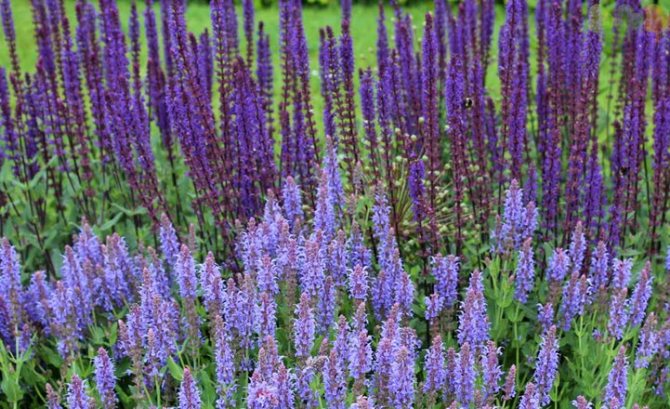
Its leaves do not have such a strong pronounced odor as the medicinal one, and its flowers have no scent at all. The external differences between these two types are insignificant. The leaves of the medicinal are much smaller and have a silvery tint, while the flowers are somewhat bluish.
We grow sage in the country
Sage meadow where to plant
All sage varieties have some general guidelines for care:
- the most suitable soil for sage is sandy sandy loam;
- humus must be added to the soil for planting, the optimum acidity is pH6.5;
- reacts poorly to frost, therefore, it is necessary to cover for the winter;
- in the spring for better growth and tillering, you should cut off dried and excess branches.
At the same time, there are some distinctive features of the cultivation of each species.
Meadow and oak sage planting and care in the open field in the Urals grow in an area with sufficient illumination and completely light humidity. They tolerate drought more easily than excess moisture. Otherwise, it is better to plant sticky sage, the habitat for it is forest shaded edges.
A good place for planting sage in spring is in the beds where onions, cabbage, potatoes or legumes grew. After harvesting the vegetable crop, the soil is dug up, humus and compost or fertilizers based on potassium and phosphorus are added.
Sowing sage in open ground is also permissible in the fall, but as late as possible so that the seeds do not have time to sprout young shoots before the arrival of frost (not earlier than the end of October). So the seeds will successfully overwinter to wake up in the spring.
Sage is sown in rows, the row spacing is about 50 centimeters, the distance between plants is 20 centimeters, and the sowing depth is 4 centimeters. Subsequently, it will be necessary to thin out the plants or sow more, what exactly needs to be done and where, the spring shoots will show. It should be noted that the germination rate of sage seeds is very high.
If sage is planned to be planted or sown in spring, then the soil is pre-enriched with nitrogen fertilizers.Seedlings planted in a permanent place feel good without transplanting for about 7 years.
In order to preserve the purity of the species, various varieties of sage should be cultivated remotely, because the plant is inherent in cross-pollination.
Contraindications for use


There are several circumstances in which it is not recommended to be treated with this plant or consumed as food. There are not many of them, but we must report them.
Contraindications in medicine are mandatory, it is better not to take risks when it comes to health.
- The plant is a mild diuretic, in case of exacerbation of renal diseases, give it up for a while.
- Not recommended for thyroid disorders.
- If pregnant, do not take by mouth (external use is permitted and recommended).
- Avoid salvia for polycystic disease.
There is also such a thing as individual intolerance. If, after using any medication based on something, unpleasant sensations arise, it is better to refuse it.
How to care for sage?
- The plant does not require careful maintenance, the main thing is to fight weeds in a timely manner and loosen the ground.
- Do not forget to carefully cover the sage before the onset of frost.
- With the onset of heat, the first thing to do is prune old shoots. Up to 10 centimeters of the stem are left below.
- The space between the plants is covered with mulch. Now in landscape design, gravel is often used for mulching; this method is also suitable for sage.
- Moderate watering is most suitable for sage, because the plant does not tolerate excess moisture.
Fortunetellers' sage and clary sage: growing and harvesting
Fertilizing and feeding
Only regular and sufficient feeding can ensure stable and correct growth of sage.
At the stage of growth and addition of shoots, nitrogen fertilizers will be suitable:
- ammonium sulfate,
- ammonium sulfide,
- ammonium chloride,
- ammonium carbonate.
Before flowering, fertilizers are changed to mineral, better complex, essential elements: potassium and phosphorus.
Correct collection
Sage leaves are cut off during the flowering period. If necessary, they are used fresh, only plucked.
"In reserve" - dried, for this, bundles are formed and hung, or laid out on a flat surface in the warmth.
In the modern world, they use a different method: dry in special automatic dryers.
Store dried stocks in a dark and ventilated place.
Useful properties and uses of meadow sage
Meadow sage is widely used in medicine (traditional and folk) for the treatment of a number of diseases. Has a second name Salvia, which means "healthy" in Latin.
A mixture of sage and other herbs has been widely used in the fight against such a formidable disease as the plague. Currently, it is grown specifically as a medicine in many European countries. Due to its medicinal properties, the plant is very popular, therefore it was taken under protection and included in the Red Book.
Meadow sage is a perennial shrub and reaches a height of up to 80 cm (pictured), widespread in the European part.


Favorite habitats are forest edges, fields, rocky and grassy slopes. According to the description, the plant has flowers of violet-blue color and rather elongated leaves with a taper towards the top of the stem. The lower part of the leaves has an expansion, and the leaves themselves are located on the stem in the opposite order to each other.
The plant has a very strong aroma and a pleasant spicy taste with a hint of bitterness. The flowering period begins in the first half of summer.
It should be collected even before it begins to bloom, since at this time the raw materials still have taste, after which it is lost.
Meadow sage is confused with its close brother - medicinal sage.In contrast, the medicinal properties of meadow sage are less pronounced.
The content of phytoncides and essential oils in it is much lower than in medicinal or nutmeg form. All active substances are found directly in essential oils. Most of them can be obtained from dried leaves and stems.
In addition to essential oils, the composition includes about 30 medicinal components. The plant has a disinfectant, anti-putrefactive, astringent and anti-inflammatory effect on the human body. The flower is an excellent diuretic, estrogenic, expectorant and pain reliever.
It is used to treat a wide variety of diseases. Infusion or tea is widely used as a sedative for the treatment of colds.
In addition to antimicrobial, expectorant and anti-inflammatory effects, scientists are studying the plant for the treatment of neurological diseases, Alzheimer's disease and memory improvement. It has been confirmed that sage is able to have a fruitful effect on the initial and mild forms of such a disease.
It is also indicated for diabetics, as it significantly lowers the glucose content in the blood. Reduces lactation in nursing mothers who have excessive milk supply. It has a detrimental effect on tuberculosis bacillus and is used to treat and prevent any form of respiratory diseases.
The plant has a number of contraindications for use:
- Not recommended for children under two years of age.
- Should not be taken by pregnant women at any time, as the plant causes contractions of the uterine muscles, which can lead to miscarriage or premature birth.
- Should not be taken while breastfeeding without clear data on benefits or harms to the baby. The remedy significantly reduces the amount of milk in the mother.
- Forbidden for epileptics, patients with hypertension or acute nephritis.
- Sage and preparations based on it are contraindicated for people who are allergic to such plants. In such people, it causes itching, rash, or swelling.
- Not recommended for people with thyroid problems.
- Should not be taken by patients with kidney problems.
- Not recommended for coughs, as sage can make it worse.
In folk medicine, meadow sage is often used as an infusion, tea or decoction for the treatment of both adults and children. They are often substituted for regular tea and drunk without special additives. According to the recommendations of doctors, sage should be drunk in an amount not exceeding three cups. Excessive consumption of the herb can be counterproductive and not beneficial.
Read also: Useful properties of thyme, chemical composition, application, video
The plant should be harvested on its own before it begins to bloom. During this period, the concentration of nutrients is much higher than during and after flowering. Thanks to them, the flower has more pronounced taste properties. It can be dried naturally in the sun or in special dryers.
Fresh meadow sage can be found in any market, pharmacy and store. The quality may vary. The best plants are those with large leaves and woody stems. Such signs indicate that they have not been chemically treated.
Due to the content of a large amount of very valuable and useful substances in essential oils, it is used as an antimicrobial agent for infectious diseases. It helps with colds, sore throats, measles, sore throats and flu. It has antipyretic and diuretic effects.
For the treatment of all of these diseases, a decoction or tea is often used. To enhance the effect, extracted sage oil is added to them, which enhances the healing effect. In regions where it is found wild, it is boiled with vinegar and used as a tonic.
It should be remembered that in the initial stages of influenza and throat diseases, sage is not recommended, as it dries the throat even more. The effect can be completely opposite and aggravate the course of the disease.
Reproduction of sage
Various methods of plant propagation are used:
- seminal;
- seedling;
- dividing the bush;
- using layering;
- cuttings.
Even the most inexperienced gardeners will be able to easily breed medicinal sage or ornamental salvia on their backyard without any extra work.
In order to obtain seedlings, the seeds are pre-sown in a closed way from February to March. And after about 10-15 days, you can observe the first growth. After three weeks, the seedlings can be divided into separate pots for planting. It is permissible to plant seeds in open ground from April, but subject to a warm climate. Before sowing in spring, the seeds should be prepared by soaking them in a growth stimulant solution. You do not need to do this before sowing for the winter.
For grafting, take hardened sage shoots and cut into 15 centimeter cuttings. Then they are placed in water, and already at the beginning of the third week, the appearance of the first roots can be observed.
In the last summer days or in the first autumn, sage shoots are planted. After all, the plant actively forms strong shoots, thanks to the tap root system.
Sage properties for men and women with alopecia


Treatment of male pattern baldness with sage
- Sage broth, if you apply lotions from it and wash your hair with a decoction, it helps men with baldness... How does this happen?
Thanks to the sage decoction, the hair follicles are strengthened, thereby slowing down or stopping the balding process.
- Another purely male disease is treated by sage along with other herbs - vesiculitis (inflammation of the seminal vesicles, which is near the prostate).
Decoction recipe:
- Let's take dry herbs: 2 parts sage, 3 parts poplar buds, 5 parts burdock root, mix and pour into a dry jar.
- We do the broth like this: 1 tea spoonful of herbal mixture pour into a thermos, pour 0.5 liters of boiling water, insist 10 hours and take ¼ part of a glass 3 times a day.
For greater effect, with this broth, you can do it every other day microclysters, 15 times.
Diseases and pests of sage
In theory, a plant is independently capable of resisting pathogenic microorganisms. After all, sage has insecticidal properties, and belongs to herbs and medicinal plants. But watering abundantly increases the risk of mold damage to plants. It is very important to monitor the degree of soil moisture, to prevent water stagnation. In case of mold damage, first aid is a sulfur solution. If the planting is too tight, spider mites, slugs or thrips are likely to be present.
Here are the most effective alternative treatments:
- spraying with garlic infusion (take two chopped heads of garlic and infuse for 5-7 days in a liter of water, then add the same amount of water and 3-5 grams of household soap to the infusion);
- 100 grams of onion husks are poured with five liters of boiling water, add 10 grams of grated laundry soap, use only a cooled solution.
Sage in cosmetology
In cosmetology, sage is used to care for the skin of the face and head. It is useful for oily and acne-prone skin. With its anti-inflammatory and antibacterial properties, sage leaves help heal stings, skin inflammation and itching.
Sage infusion can be used as a lotion to treat rashes, neurodermatitis and other inflammatory processes on the skin. Sage is used in shampoos for oily hair. Rinse your head with sage infusion to make your hair less greasy. Sage extracts are used as a way to paint gray hair - it gives the hair a dark shade.
For oily skin, a tonic for washing is prepared from the herb.Sage leaves and flowers are poured with half a glass of hot water. The infusion is cooled, filtered, apple cider vinegar is added in a 1: 1 ratio and the mixture is rubbed over the face twice a day.
Like other plants, sage has contraindications. Do not use it for lactating and pregnant women, as well as children. If you are allergic to other plants, consult your doctor before consuming sage.
Sage medicinal use
Salvia has a wide range of medicinal properties, such as sedative, antiseptic, anti-inflammatory and antimicrobial. It is often used for viral infections, liver, kidney and stomach diseases. the substances contained in sage improve digestion, normalize the work of the glands involved in the process of digestion, and has a choleretic effect. Sage also helps with such an unpleasant symptom as bloating, increases and enhances appetite.
The beneficial properties of sage are also due to the presence of essential oils in its leaves, in an amount of up to 0.5%. Sage seeds contain about 20% protein and 30% oil. Therefore, medicinal sage is used in the difficult-to-treat fight against respiratory diseases. It is added to medicinal preparations for the treatment of bronchitis, as an expectorant. Helps sage fight inflammation of the urinary tract. The scent of sage essential oil can relieve headaches and beat stress.
As an external remedy, the plant is used in the fight against fungal infections, purulent inflammation of the skin, and frostbite. For medicinal purposes, sage is brewed or tinctures are prepared. You need to know: if taken orally for too long, the substance accumulates, poisoning may occur.
Sage has both medicinal properties and contraindications for women.
- period of pregnancy and lactation;
- hypertension, because sage increases blood pressure;
- benign and malignant neoplasms of the breast and reproductive organs;
- if you take funds with sage for a long time, you should make rest from it for the body, this herb tends to accumulate.
Application in cosmetology
Salvia is also used in cosmetology, in the form of decoction trays for the care of oily skin. Also, the broth helps to get rid of dandruff, makes the hair shiny and silky to the touch.
Cooking use
Experienced chefs appreciate the delicate and tart aroma of sage leaves. It is often added to dishes to give them a unique aroma with a slight bitterness inherent only in this spice.
Add to:
- meat
- fish
- soups
- cheeses
- curd fillings
The spice crushed to a state of powder is added to the sausage, when salting bacon, it is used in brewing. Sage is most popular in Italian cuisine.
Folk recipes for the use of sage
The healing properties of sage herb are unique, and therefore folk medicine has not spared it. Below is a description of how to use this herbal medicine and a photo.
Sage tea
Helps when the disease provokes profuse sweating. This tea helps to strengthen the immune system. Its frequent use improves memory and increases performance. You can drink if you want to stop the lactation process.


Sage-based tea restores strength and increases performance
Method of preparation: 5 g of herbs (dried) pour 250 ml of boiling water, cover and leave for 15 minutes. Take three times in knocks before meals for a third of a glass. The duration of treatment is 14-20 days.
Sage tea
It is used both internally and externally. The first method is relevant for the normalization of acidity in gastritis, colitis. It is a good cough suppressant. In the second case, it is better to use it for pediatric thrush (rinse your mouth), to reduce the sensitivity of tooth enamel, when gum disease occurs.
Sage can have a positive effect on hair condition (rinsing after washing).
Method of preparation: pour 5 g of dried sage with 250 ml of boiling water and leave for 1 hour. Strain. Drink half a glass three times a day before meals. If you want to treat a cough, you need to dilute the infusion with warm milk (for 1 liter of infusion, 1 liter of milk).
Broth with sage
Scope: bronchial disease, exacerbation of the gastrointestinal tract and liver, normalization of blood sugar, pain in sciatica. 5 g of herbs are poured over 250 ml of boiling water and left to simmer over low heat for 10 minutes. After insisting 30 minutes. Take three times a day for 1 tbsp. l.
Sage tincture on alcohol
A positive result from the use of atherosclerosis, is used to improve brain activity. For half a liter of alcohol add 3 tbsp. l. dry herbs, tightly closed and infused for a month. Take 1 tablespoon before each meal with water.


Sage wine
Doctors recommend using it in order to maintain general physical condition., has a beneficial effect on the performance of the vascular system and the brain.
For preparation, it is necessary to stir 100 g of dry sage in 1 liter of table grape wine. After 10 days, you can take 20 ml every day after meals.


Decorative properties and combination with other plants
Blue-purple blooming sage is a good companion for warm-colored (orange, red, yellow) flowers. Neighborhood for sage is selected, playing on the contrast of its thin weightless inflorescences and lush flower buds.
The most popular among landscape designers are one- or two-year-old sage varieties: clary sage, brilliant salvia. But for arranging aroma - beds, perennial varieties are mainly used. In this case, sage with basil, rosemary, mint, thyme, oregano, hyssop.
Salvia combines well decorative and medicinal properties. Growing sage in your garden is not only pleasing to the eye, but also helps in the treatment of many diseases.
Sage properties for women with infertility and menopause
The sage contains phytohormonesthat help to cure gynecological diseases:
Sage infusion helps to reduce:
- Hot flashes at the onset of menopause, profuse sweating and nervousness.
- If you drink an infusion of sage, then bleeding will decrease with heavy menstruation.
- The broth reduces lactation in nursing mothers. This must be remembered when you want to wean your baby.
- The presence of all the same phytohormones that act as estrogens, even more ancient Egyptians treated infertility. There can be many reasons for infertility, but ovulation disorders are more common.
- Sage helps the synthesis of estrogens and also makes up for the lack of them in the blood.
Before starting to heal infertility with sage infusion, the woman needs to study, by observing the temperature in the rectum and ultrasound, when the egg reaches its largest size.
You need to take sage infusion every day, from the 3-4th day of menstruation until the time when the egg is the largest.
Important... In the first days of the menstrual cycle, you cannot drink sage infusion, since it has a hemostatic effect.
After the egg cell reaches its largest size, that is, ovulation, it is contraindicated to drink sage infusion, since it maintains the uterus in good shape, and can prevent the embryo from attaching to the uterine cavity.


Treatment of infertility in women with sage
For infertility and other female diseases, such an infusion is used:
- Pour the detailed sage leaves (1 tablespoon) with boiling water (1 glass), close, insist for about 15 minutes, drink 4 times a day, 1/3 of a glass.
Important... If, after the first course of treatment with sage infusion, pregnancy does not occur, you can continue to be treated, but no more than 3 courses, and then contact your doctor.
With a broth of sage, women douche and make sitz baths when thrush, inflammation of the vaginal mucosa, erosion of the cervix... It is desirable to carry out these procedures 2 times a day. They give positive results.
Important: the optimum temperature of the decoction for the procedures is 38 ° C.
Sage for colds: properties, application


Inhalation for colds
Sage is a part of the breast collection, they treat lung diseases, and even with pulmonary tuberculosis, sage infusion improves.
- For the best effect with bronchitisinstead of boiling water sage is brewed with boiling milk... It should be drunk hot, with honey, half a glass 3 times a day.
- When bronchitis, laryngitis, sore throat gargle with warm sage broth, and in order to recover faster, they also drink a glass of broth at night.
- Also at colds good help inhalation... They are carried out with sage oil, adding 1 drop to hot water poured into the inhaler, and breathing this vapor. If sage oil is not available, inhalation can be done from the decoction. Inhalation can be done over a regular saucepan, covered with a towel. Inhalation soothes a cough, softens the tissues of a sore throat.


